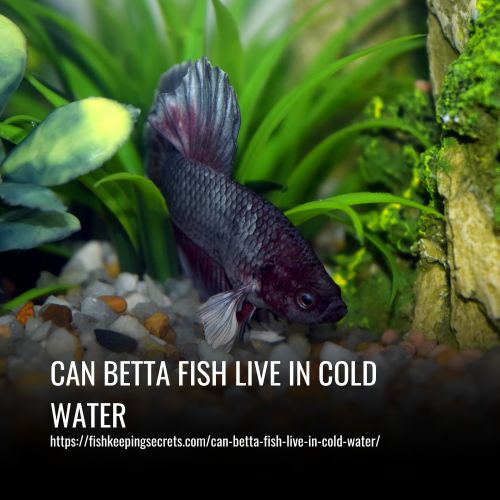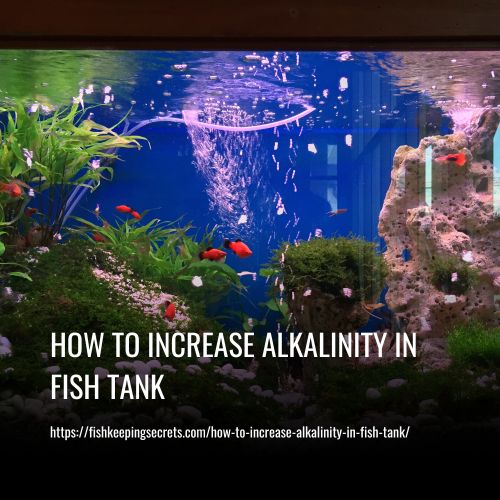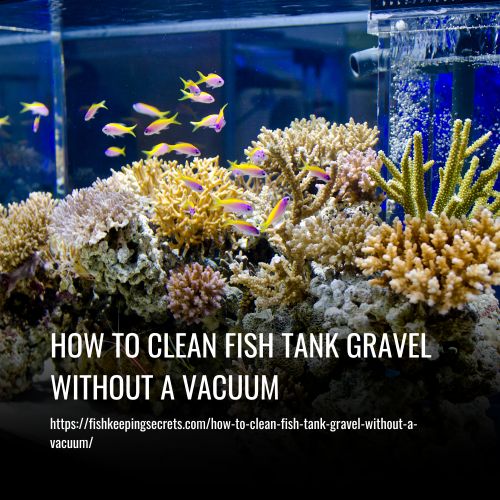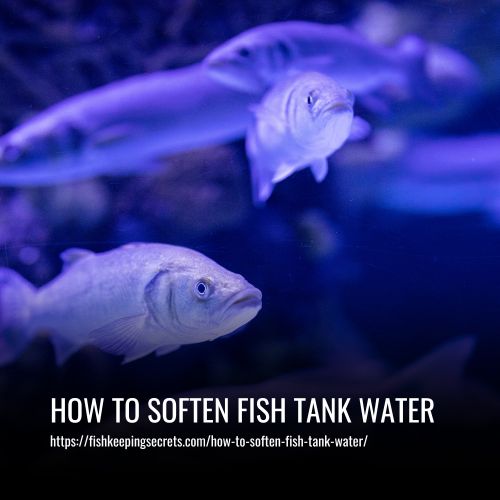How Long Can Fish Survive In Tap Water
This post contains affiliate links. As an Amazon Associate, we earn from qualifying purchases.
Fish can survive in tap water for a short period of time, but it is not recommended to keep them in tap water for an extended period. Tap water may contain chemicals such as chlorine and heavy metals that can be harmful to fish. It is best to use a water conditioner or treat the tap water with appropriate additives to make it safe for fish before adding them to the tank.
Tap water is generally safe for fish as long as it has been adequately treated with a dechlorinating agent. This is especially important when introducing goldfish into a tank, as chlorine and other chemicals can be toxic to them. To make tap water safe for fish, many aquarium keepers use a water conditioner or an RO/DI system that cleans the water at a molecular level.
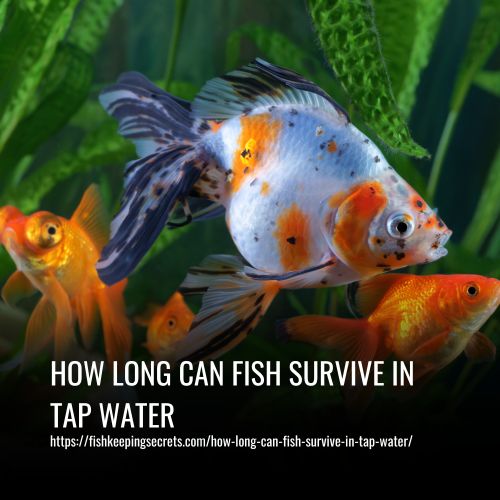
Is Tap Water Safe For Fish?
When adding water to a fish tank, it is important to consider whether or not the water contains chlorine. High levels of chlorine can be fatal to fish and must be removed before it reaches your aquarium.
This can be done by leaving the tap water on for 1-5 days so that the chlorine has time to evaporate, aerating the water with an air stone for 12-24 hours, or boiling it for 15-20 minutes. It is also important to note that even low levels of chlorine can kill fish within minutes. Taking these precautions will help ensure the health and safety of your fish.
What’s in my tap water?
Maintaining a healthy fish tank is essential to the health and well-being of your pet fish. It’s important to monitor water parameters such as ammonia, nitrite, CO2, and levels of heavy metals in your tank to ensure a proper environment for your fish.
You should also regularly check pH levels and temperature to keep things balanced. Providing a varied diet and proper filtration can help keep your aquarium clean and hospitable.
Finally, it’s always a good idea to consult with an expert if you need help or further advice on maintaining your tank or keeping healthy fish.
Will A Fish Die In Tap Water?
Tap water should be avoided for fish as it contains chlorine and chloramine, which can be dangerous for them. Both of these compounds can damage the gills and skin of the fish, causing bleeding, infection, and eventual death if not treated.
It’s also important to make sure that your aquarium or pond water quality is perfect for your fish – this means testing for things such as ammonia, nitrates, nitrites, pH levels, and heavy metals in the water. All these contaminants can harm fish health if present in high concentrations. Additionally, acidic and alkaline waters can also cause problems for goldfish who naturally have low tolerance levels for changes in pH levels from their natural environment.
The best way to ensure your fish are safe is by using dechlorinated water that’s free of chlorine, nitrogenous components, and other trace elements that may be hazardous to them when ingested. You can find solutions like this at pet stores which will help restore beneficial bacteria as well as add nutrients and minerals back into the water – so do take proper steps if you want your little undersea friends to survive!
Why Can’t Fish Survive in Tap Water?
Fish cannot tolerate tap water, due to the chlorine and chloramine it contains. Although these are essential components of water treatment that make it safe for us to drink, they can cause serious harm to fish. Both chlorine and chloramine damage the gills and skin of fish, making it difficult for them to absorb oxygen or even swim. Furthermore, these substances can end up in their bloodstream and become toxic.
Small amounts of exposure to chlorine and chloramine may leave your fish feeling sick, while more extreme levels or longer exposure could lead to a fatal outcome. That’s why it is important to always use specially treated water if you keep a fish tank.
How Do You Keep Fish Alive In Tap Water?
In order to keep fish alive in tap water, you first need to make sure that the tap water is clean and at the right temperature. Also, it must be properly treated with a de-chlorinator or water conditioner to neutralize any harmful chemicals such as chlorine. On top of that, fish require oxygen to survive. Thus, having enough oxygen in the water is important as well.
If you’re looking for a safe and easy way to cycle your aquarium, then using a de-chlorinator is recommended as it can help develop beneficial bacteria that are necessary for fishless cycling. It’s also important to introduce your fish gradually into the aquarium instead of overloading them with too many changes all at once. Lastly, remember to replace 10%-20% of the tank’s water each week for freshness and quality control purposes.
How To Treat Tap Water For Fish
Making sure that the water you use for your fish is safe is essential for keeping them healthy and thriving. Water from taps can be rendered suitable for aquatic life by using a liquid water conditioner, available at stores specializing in aquariums and pets.
1. Removing Chlorine From Water For Fish:
Removing chlorine from water for fish is essential and can be done in a few simple steps. Boiling the water is one of the best ways to naturally remove chlorine from their environment. Allowing the water to sit and evaporate will cause the chlorine to dissipate entirely, making it safe for fish to consume.
Alternatively, an air stone or bubbler can be used run on a 12-24 hour schedule to aerate and decontaminate contaminated water. If you don’t have access to an air stone, you can boil the water for up to 15-20 minutes with guaranteed success in removing chlorine.
Whatever method you decide, it’s important that this is done before housing any fish so they are living in a safe environment with clean water!
2. Let the Water Sit:
The best way to remove chlorine from water for fish is to simply let it sit. This allows the chlorine to evaporate slowly at room temperature and by giving it time, all the chlorine should eventually disappear – sometimes even taking a few days!
By letting the water sit at normal temperatures, you can also help reduce stress whenever your fish have been put into unfamiliar surroundings. That’s because when the water is allowed to naturally reach room temperature on its own, it can help reduce any sudden changes that could potentially shock their systems!
3. Boil the Water:
If you’re looking for a fast and effective way to remove chlorine from tank water for your fish, then boiling is the answer. It only takes 15 minutes in total to complete the process and it’s effective at eliminating both chlorine and any harmful bacteria that can cause fish skin disease.
In addition, the speed of evaporation will depend on the size and volume of your water container. So if you have a larger tank or larger container, you’ll need to make sure there’s enough room so that it evaporates faster. Boiling your tank water is an easy solution that won’t take up too much of your time.
4. Use Water Conditioners:
When it comes to keeping your fish healthy and happy, one of the most important things you need to do is remove chlorine from your water. And the best way to do that is by using a water conditioner. Water conditioners are designed to remove chlorine and chloramine from tap water, as well as address issues related to hard water.
API TAP Water Conditioner is an excellent choice when it comes to removing chlorine from your fish tank. It’s available in different sizes, ranging from 1 ounce (29.57ml) up to 128 ounces (3,785.41ml), which makes it practical for any size aquarium. Plus, it’s incredibly affordable! It’s safe for all types of fish and won’t break the bank either!
5. Install a Reverse Osmosis Unit:
If you’re looking for a way to make sure your tap water is safe and toxin-free for your fish, then installing a reverse osmosis unit is a great idea. This advanced system hooks up to your faucet and filters out any problematic chemicals that can be damaging to the health of your fish. It also softens the water and lowers its acidity level (pH), which greatly helps ensure that the environment in the aquarium or pond is healthy for them.
6. Remove Chlorine With Ultraviolet Light:
If you have a fish tank, removing chlorine from its water is essential for keeping your fish healthy. The best way to do this is by using ultraviolet light. This causes reactions in the water that neutralize chlorine and also help break down toxins such as ammonia and nitrate, making it an effective choice for clearing cloudy and green water in tanks of up to 300 gallons.
The Green Clear UV lamp available on Amazon is an excellent option if you are looking to remove chlorine from your fish tank’s water. It can help you clear cloudy/green water quickly, however, depending on the severity of your issue it may take several days or even up to a month until all traces of algae or other contaminants are cleared out completely.
FAQs
Fish can typically survive in tap water for a short period, usually around 24 to 48 hours, without a water conditioner. However, this depends on various factors such as the specific type of fish, water temperature, and the presence of harmful chemicals like chlorine and chloramine in tap water.
It’s generally not safe to add fish directly to tap water from the faucet without conditioning it first. Tap water often contains chlorine, chloramine, and other chemicals that can harm fish. It’s essential to treat tap water with a suitable water conditioner to remove these harmful substances and make it safe for fish.
Some fish species may adapt to certain aspects of tap water over time, but it’s crucial to note that tap water can still contain harmful substances like chlorine and heavy metals that can be detrimental to fish health. Proper water conditioning is necessary to ensure a safe and healthy environment for fish.
It’s recommended to let tap water sit for at least 24 hours before adding fish. This allows any chlorine present in the water to dissipate naturally. However, for the complete removal of chlorine and chloramine, using a water conditioner is the most effective method.
Fish may survive in untreated tap water for a short period, but prolonged exposure can lead to stress, illness, and even death. It’s crucial to treat tap water with a water conditioner to neutralize harmful chemicals and create a safe aquatic environment for fish.
Exposure to untreated tap water can lead to various health issues for fish, including irritation of the gills and skin, respiratory problems, and damage to internal organs. Additionally, harmful substances like chlorine and heavy metals can negatively impact fish’s immune systems, making them more susceptible to diseases and infections.
Conclusion:
Ultimately, the answer to how long fish can survive in tap water depends on many factors, such as the type of fish, the temperature of the water, and other environmental factors. While many kinds of fish are able to live for a brief period of time in these tap water environments, it is important to note that this should not be used as a replacement for an aquarium setup if you plan on keeping them alive over the long term.


